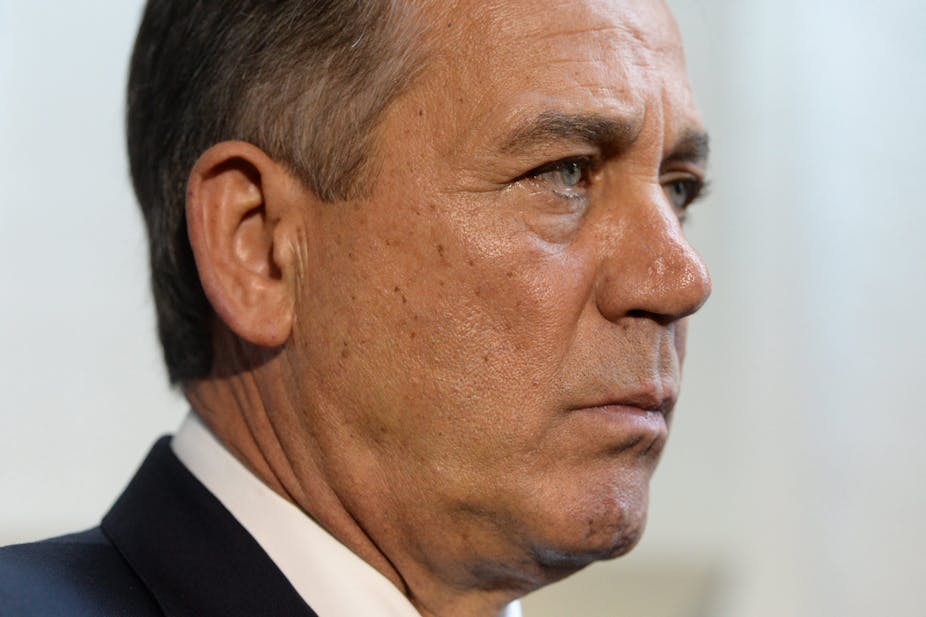The end of the two week-long US government shutdown appears imminent, and a temporary lift to the American debt ceiling is in place.
But what do we know about the various theories of negotiation that underpinned the politicking between Democrats and Republicans in Washington, D.C.?
During the shutdown, various news articles attempted to explain the shutdown and debt ceiling negotiations in terms of game theory or the Cold War, alongside advice from negotiation experts which proposed solutions to the standoff. Much of this analysis radically oversimplified the complexity of the specific circumstances of the negotiation process and oversold the predictive power of negotiation theory.
Earlier this week, Cass Sunstein, the Robert Walmsley Professor at Harvard Law School published a widely read piece for Bloomberg. He argued that in the context of the shutdown negotiations, powerlessness was actually very powerful.
In a negotiation, you might well have more power if you are powerless. Strength can be weakness, and weakness can be strength.
Sunstein used the economic theory of Nobel-winning economist and game theorist Thomas Schelling to argue that Republican Speaker John Boehner was in a powerful negotiating position because of the lack of control he exerted over intransigent House Republicans.
In Sunstein’s view, the volatility of Boehner’s own position and the impossibility of controlling House Republicans meant that the Republicans should have been able to negotiate an excellent deal for themselves because compromise on their part was unlikely. So, powerlessness in the form of an inability to compromise became a source of negotiating power.
Sunstein also argued that president Barack Obama’s bargaining position was weakened by some interpretations of the 14th Amendment to the US Constitution, which argued that the president had the power to ensure that national debts were paid, even if Congress hadn’t raised the debt limit. Sunstein claimed that this interpretation, if correct, undermined Obama’s negotiating power because it removed the most pressing consequence of not agreeing: a catastrophic national debt default.
Much of the writing in the field of negotiation borrows from economic theory. Like Sunstein’s work, these writers attempt to dissect the negotiation process in order to predict outcomes in negotiation and improve negotiation practices.
The authors of negotiating bible Getting to Yes - proponents of principled negotiation - set out five principles upon which productive problem-solving negotiation is based. These are: to separate the people from the problem; focus on interests not positions; invent options for mutual gain; insist on using objective criteria to govern the outcome; and know your best alternative to a negotiated agreement. Harvard law professor Robert Mnookin is one to have applied aspects of principled negotiation to the standoff in the US.

Similarly, in the context of the often difficult negotiations following divorce, Mnookin and fellow legal academic Lewis Kornhauser identified five important influences upon bargaining outcomes in 1979. These are: the preferences of the divorcing parents; the bargaining endowments created by legal rules that indicate the particular allocation a court will impose if the parties fail to reach agreement; the degree of uncertainty concerning the legal outcome if the parties go to court, which is linked to the parties’ attitudes towards risk; transaction costs and the parties’ respective abilities to bear them; as well as strategic behaviour.
These approaches to negotiation are useful in helping to dismantle the dynamics of particular negotiations, including the political standoff in Washington. Each approach isolates different variables, which may come into play in negotiation and attempts to determine the importance and influence of each variable upon negotiations. There is a seductive simplicity in such theories of bargaining, including game theory.
But these theories alone can’t explain the whole problem. Sunstein’s account of negotiations over the shutdown oversimplified the messiness and unpredictability of human behaviour. His description of the positions of Obama and Boehner appeared premised upon the rationality of the players. His narrative of power was rigid and remarkably inert. It may be that the disunity among Congressional Republicans did not improve the bargaining position of Boehner, and allowed new players to come to the negotiation table.
Now the shutdown is over, we can begin to know more about what factors were decisive in the outcome. Negotiations often don’t play out as we would predict: negotiators may be tired, important information incomplete or wrong, beliefs false or personal frictions or affections paramount. Sunstein did acknowledge the risks of the negotiation breaking down.
Bargaining power inevitably ebbs and flows, circulating imperceptibly around a negotiating table. Before next February - when the temporary lift to the debt ceiling is set to terminate - we may all have a chance to learn more about the power dynamics of these negotiations.

